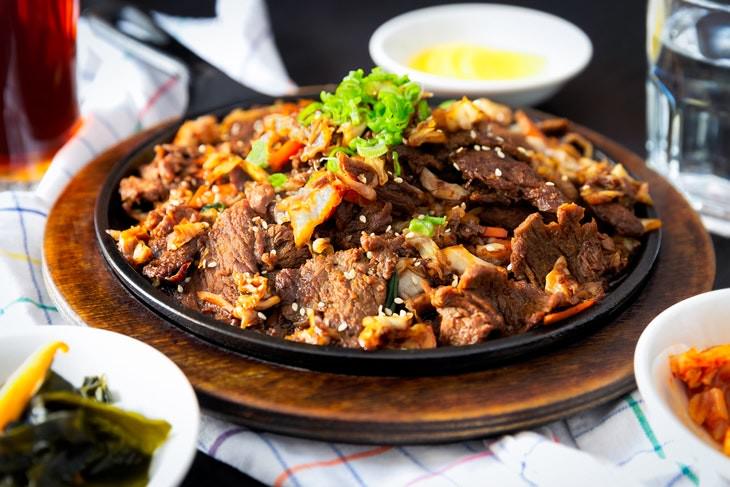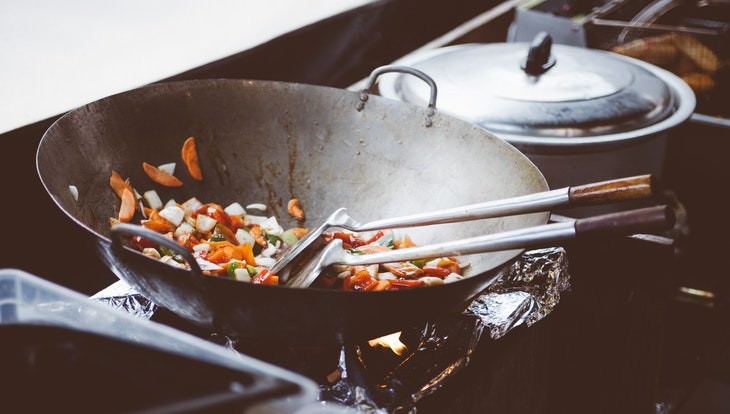The
mutual ingredient in any recipe, be it a salad, dessert, sauce, soup or
a main dish are cooking oils. They’re just essential in any kitchen,
there’s no way around it, and knowing which oil works best for which
task can become the card up your sleeve that will elevate your cooking
skills from average to profound. Not pairing cooking oils to a specific
dish, on the other hand, can ruin its taste and texture, as anyone
suffering a fiasco after trying to crisp up French toast using butter
will know.
In
order to know which oil to use in which case, you’ll have to know a
little science, as the smoke point of a specific oil variety is what
makes it suitable for a specific task. The general rule is the higher
the smoke point of an oil, the crispier the result.
That’s
why oils with a high smoke point, such as avocado oil, ghee, refined
olive, and peanut oil, are typically used when high temperatures are
involved and are best for frying, grilling, and roasting. Oils with
lower smoke points, e.g. butter, shortening or linseed, on the other
hand, will never yield a crispy crust at high temperatures.
Another thing to consider is the taste of the oil,
with sweeter or neutral oils like butter and sunflower oil being more
suitable for baking desserts, whereas more fragrant oils, e.g. pumpkin
seed oil, sesame oil, and extra virgin olive oil shine the most as an ingredient in salad dressings, sauces, and dips.

The last thing to consider is the degree of refinement:
refined oils typically have a higher smoke point than their virgin
counterparts. So, extra virgin olive oil, for instance, will be best
suited for salads and dressings, whereas refined olive oil will be
perfect for baking, roasting and sauteing.
Also,
don’t forget that you can always mix several oils together to get a
blend that will yield your desired results and taste. Returning to the
example of French toast, I typically mix butter and grape seed oil to
get perfectly crispy, and yet rich and buttery French toast.
The
chart above explains the best application for several popular oil
varieties. Below we list the best cooking oils for each culinary task,
be it flavoring, baking, roasting or frying.
The Best Oils For Cool Dishes
Salads,
dips, marinades, and dressings are the most receptive of interesting,
fragrant oils that have a relatively low smoke point. These oils include
unrefined peanut oil, extra virgin olive oil, sesame oil, linseed or
pumpkin oil.
When choosing a specific type of oil, consider its flavor, texture, and color. Unrefined coconut oil,
for instance, will have a strong coconut taste and will impart that
taste onto the dish, which may not benefit all salads or marinades. The Ultimate Cooking Oils for Cooking at High Temperatures (Roasting, Searing and Frying)
As
we mentioned previously, you’ll need an oil that has a high smoke point
to yield that crispy, caramelized crust. These oils include refined
avocado oil, which has the highest smoke point, but also other refined
oils, like peanut, olive, sunflower, vegetable and coconut oil.
Since these oils are all refined, they typically have a very neutral flavor profile and can be used interchangeably.
These Oils Are the Best Cooking Oils for Stewing and Sauteing
Sauteing,
preparing a sauce or stewing requires longer cooking times over medium
to low temperatures and so oils with medium to high smoke points are
perfect to achieve this task. These oils include olive oil, canola or
vegetable oil, sesame oil, avocado oil, grape seed oil, sunflower, corn oil, and others.
Choose
the one you like the most, one that fits your taste and budget, and
maybe consider how healthy a certain cooking oil is as well since some
oils have associated health benefits , whereas others, such as vegetable oils, grease or margarine, have a bad rep.
The Best Cooking Oils for Baking
Baking
doesn’t typically require a high smoke point, but a neutral or slightly
sweet flavor profile will be essential for baking, especially for
desserts. That’s exactly why adding olive oil instead of shortening,
even just to grease the pans when making desserts is a big mistake.
Instead, choose a neutral oil such as canola, shortening, butter,
margarine, virgin coconut or avocado oil for baking.




